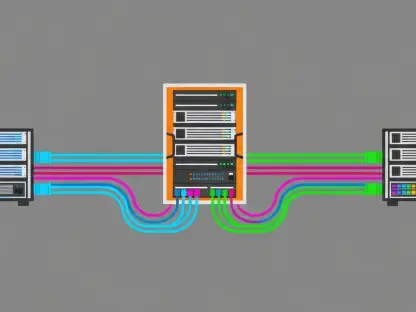Listen to the Article
Dashboards don’t make decisions – people do. And the person who must defend the numbers to the board and the street is your Chief Financial Officer (CFO). If your BI program can’t deliver the same answer, everywhere, every time – plus the audit trail behind each chart – you don’t have a visualization problem; you have a semantics problem.
A trustworthy semantic layer transforms fragmented data and ad-hoc logic into a shared language that travels seamlessly from analyst notebooks to board decks without translation errors, replacing dueling dashboards with consistent, explainable, CFO-safe numbers.
This article traces the journey from recognizing a trust gap in finance through understanding what a semantic layer is, why CFOs should trust it, how to build and govern it, the pitfalls to avoid, and how to prove its value in business intelligence.
Why the Trust Gap Shows Up In Finance
For years, many enterprises have chased a tidy ideal: a single source of truth. Centralizing everything sounded right. In practice, it created bottlenecks and spawned shadow spreadsheets, then sowed doubt when numbers disagreed across reports. Finance feels the pain first: churn means one thing in marketing and another in success; revenue recognition rules mutate between sales ops and financial planning and analysis.
When frontline context doesn’t show up in the official data, trust erodes, and decisions stall. Bridging that gap between data logic and financial accountability is where a semantic layer earns its keep.
What A Semantic Layer Actually Is
A semantic layer is the contract between business and data. It sits above raw stores and presents a consistent vocabulary – entities, metrics, time grains, and filters – that every tool understands. Rather than forcing all data into one repository, it exposes a unified view across sources while preserving domain nuance.
One definition of “active customer,” one of “gross margin,” one of “net retention” – versioned, tested, discoverable. When the CFO asks why the margin moved two points, the answer resolves to definitions, lineage, and code – not guesses. That’s how you move from pretty visuals to confident decisions. But how do you ensure CFOs trust this layer?
What Makes CFOs Trust it
CFOs don’t buy architectures; they buy certainty. A semantic layer earns trust when it is consistent, governed, auditable, testable, performant, and tool-neutral. Consistency means having shared definitions and dimensions that are published once and reused everywhere. Governance means access policies and approvals are embedded at the layer, not copied and pasted downstream.
Auditability is full lineage from visualization back to sources and code, with change history and owners. Tests catch semantic and data quality regressions before they ship. Acceleration – aggregates, extracts, and caching – keeps queries fast. And tool-neutral interfaces – such as structured query languages, APIs, and BI connectors – let Finance maintain its existing tools while sharing the same logic. To see how these attributes come together in practice, let’s look at the architecture that enables them. Each pillar depends on an architecture designed for transparency, not control.
The Architecture In One Picture (Described)
Source systems – such as enterprise resource planning, customer relationship management, billing, product, and Human Resource Information Systems – feed your lake or warehouse.
Transformation pipelines model raw tables into conformed domain objects. The semantic layer sits above, defining entities and metrics with version control.
Catalog and lineage document the layer; policy-as-code enforces permissions. Downstream, notebooks, ad-hoc structured query language queries, and dashboard platforms all utilize the same metric service.
Observability watches freshness, cost, performance, and usage to inform optimization. From here, you’ll see how to scale this architecture through federation without chaos.
Federation Without Chaos
You don’t need to re-centralize to get consistency. Pair the semantic layer with federated governance: domains own their data products and propose metric changes; a cross-functional council, comprising Finance, Revenue Operations (RevOps), Data, and Security, approves global concepts and policies.
You get guardrails without gatekeepers – and it scales across regions and business lines. The payoff is fewer dueling dashboards, faster cycle times for new analytics, and increased confidence at month-end. For example, a domain lead in Sales might propose a new definition for ‘pipeline coverage,’ which would be reviewed and approved by the council before rollout.
With the roadmap laid out, you’ll revisit why the notion of a single source of truth is flawed and discuss anti-patterns to avoid.
Anti-patterns to avoid
No system is foolproof, so here are what you need to avoid:
“Lift-and-shift the logic”: migrating every dashboard calculation into the layer without refactoring domains or definitions.
“Governance-as-ticket-queue”: turning the council into a bottleneck rather than codifying policies and automating checks.
“One giant model”: building a fragile supergraph that breaks when one domain evolves. Think modular, versioned data products.
“Tool lock-in”: tying the semantic layer to a single BI platform; Finance should be able to swap tools and keep the truth.
“No owner, no test”: any metric without an accountable owner, documentation, and tests is a liability on the CFO’s balance of trust.
Beyond avoiding these mistakes, proving the value of the semantic layer to the CFO is crucial; that’s the next focus.
Proving Value to the CFO
Measure what they care about. Track close-cycle days, reconciliation time between source and financial statements, variance analysis lead time, board-pack rework, and cost-to-serve for analytics. Show adoption with usage telemetry: how many dashboards swapped to certified metrics, how many redundant definitions retired, and how often Finance’s metrics are queried by other teams. To ensure these gains endure, you need effective change management, which will be discussed next.
Change Management That Sticks
Teach the language, not just the tool. Run a short “metrics 101” for business partners and publish a lightweight style guide. Promote a contribution model where domain analysts propose metric changes via pull requests with automated tests. Maintain a monthly changelog and a clear escalation path so that everyone is aware of the reason behind any changes in numbers. Celebrate certified metrics in quarterly reviews to reinforce adoption and promote ongoing progress. Once change management is in place, let’s examine where this transformation leaves BI as a discipline.
When everyone speaks the same data language, Finance stops questioning the numbers and starts using them.
Where This Leaves BI
The job isn’t to ship more dashboards; it’s to end arguments. A semantic layer, paired with federated ownership, turns metrics into shared assets. It preserves local context while eliminating semantic drift, so conversations begin from the same ground truth and move more quickly to action. When your CFO can trace a number from board slide to source system on one path – and everyone sees the same figure – you’ve shifted from reporting to decisioning. That’s how you earn durable trust and turn analytics from a cost center to a competitive advantage.
Do that, and Finance stops reconciling reports and starts steering the business with timely, accountable decisions.









